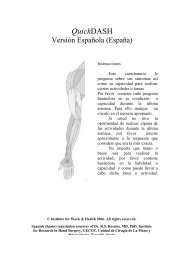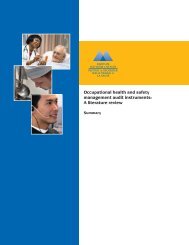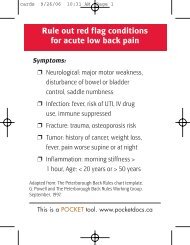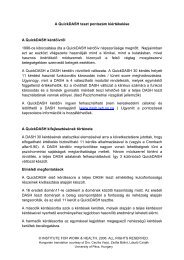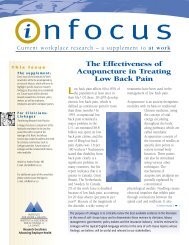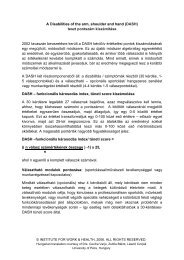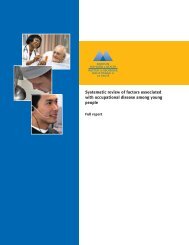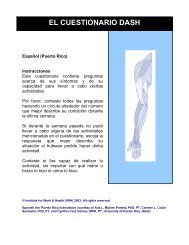A systematic review of injury/illness prevention and loss control ...
A systematic review of injury/illness prevention and loss control ...
A systematic review of injury/illness prevention and loss control ...
- No tags were found...
Create successful ePaper yourself
Turn your PDF publications into a flip-book with our unique Google optimized e-Paper software.
1) Of the articles that remained after the Level 1 <strong>review</strong>, studies in the<strong>of</strong>fice sector <strong>and</strong> health-care accounted for 44% <strong>of</strong> the literature.Again, this is important because two business sectors are dominatingthe field. The <strong>of</strong>fice sector specifically is known for frequency <strong>of</strong>injuries but not necessarily severity (e.g. fatalities). One also has toconsider how generalizable a back school completed in a health-careor <strong>of</strong>fice environment is to the transportation, construction ormanufacturing sectors.2) The interventions used to <strong>control</strong> injuries are the only area where astrong level evidence <strong>of</strong> positive effects exists. This finding isimportant because it emerged while trying to characterize the broadfield <strong>of</strong> IPCs. We found no <strong>prevention</strong> programs that had a strongeffect. This does not mean <strong>prevention</strong> does not work. What itdemonstrates is that studies <strong>of</strong> <strong>prevention</strong> programs are not completed<strong>of</strong>ten enough to find a strong level <strong>of</strong> evidence. Researchers <strong>and</strong>stakeholders should consider this an important finding <strong>and</strong> worktogether to develop high quality studies that are generalizable acrossbusiness sectors.The amount <strong>of</strong> literature <strong>review</strong>ed in this study was enormous. The team wasamazed <strong>and</strong> somewhat frustrated by the levels <strong>of</strong> evidence that emerged fromthe literature. The <strong>review</strong> proved fertile ground for discovering gaps in theIPC literature. Because researchers <strong>and</strong> stakeholders use terms differently,this a key factor when trying to create actionable messages from research.The small lessons learned, major points to consider <strong>and</strong> level <strong>of</strong> evidencefindings combine to create a not-so-surprising message. Researcherscompleting workplace research can design <strong>and</strong> conduct a high quality study ifthey approach the study with the realization that involving the people in theworkplace prior to designing the study is integral to their scientific success.A <strong>systematic</strong> <strong>review</strong> <strong>of</strong> <strong>injury</strong>/<strong>illness</strong> <strong>prevention</strong> <strong>and</strong> <strong>loss</strong> <strong>control</strong>programs (IPCs)41



